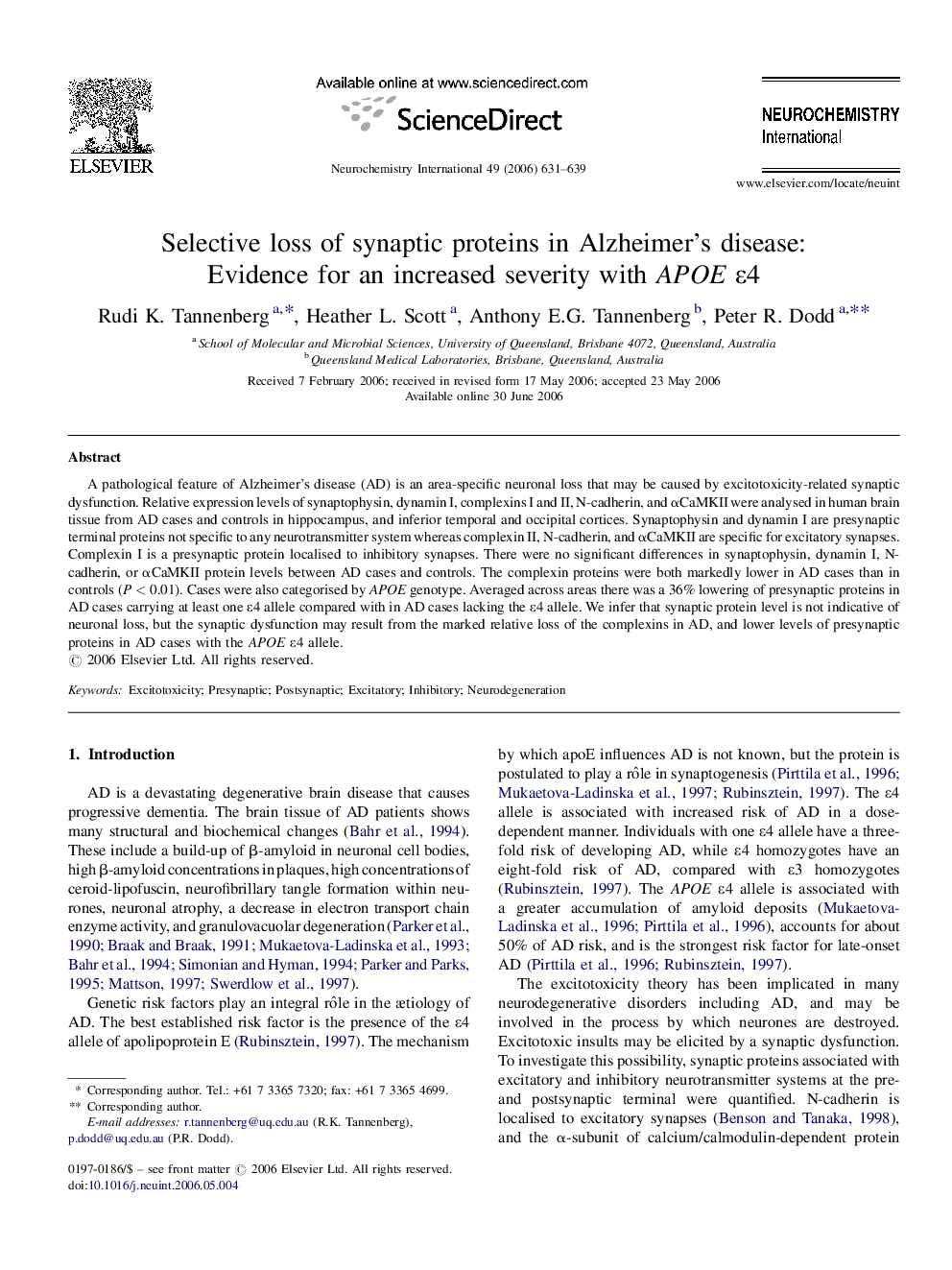| Article ID | Journal | Published Year | Pages | File Type |
|---|---|---|---|---|
| 2202262 | Neurochemistry International | 2006 | 9 Pages |
A pathological feature of Alzheimer's disease (AD) is an area-specific neuronal loss that may be caused by excitotoxicity-related synaptic dysfunction. Relative expression levels of synaptophysin, dynamin I, complexins I and II, N-cadherin, and αCaMKII were analysed in human brain tissue from AD cases and controls in hippocampus, and inferior temporal and occipital cortices. Synaptophysin and dynamin I are presynaptic terminal proteins not specific to any neurotransmitter system whereas complexin II, N-cadherin, and αCaMKII are specific for excitatory synapses. Complexin I is a presynaptic protein localised to inhibitory synapses. There were no significant differences in synaptophysin, dynamin I, N-cadherin, or αCaMKII protein levels between AD cases and controls. The complexin proteins were both markedly lower in AD cases than in controls (P < 0.01). Cases were also categorised by APOE genotype. Averaged across areas there was a 36% lowering of presynaptic proteins in AD cases carrying at least one ɛ4 allele compared with in AD cases lacking the ɛ4 allele. We infer that synaptic protein level is not indicative of neuronal loss, but the synaptic dysfunction may result from the marked relative loss of the complexins in AD, and lower levels of presynaptic proteins in AD cases with the APOE ɛ4 allele.
